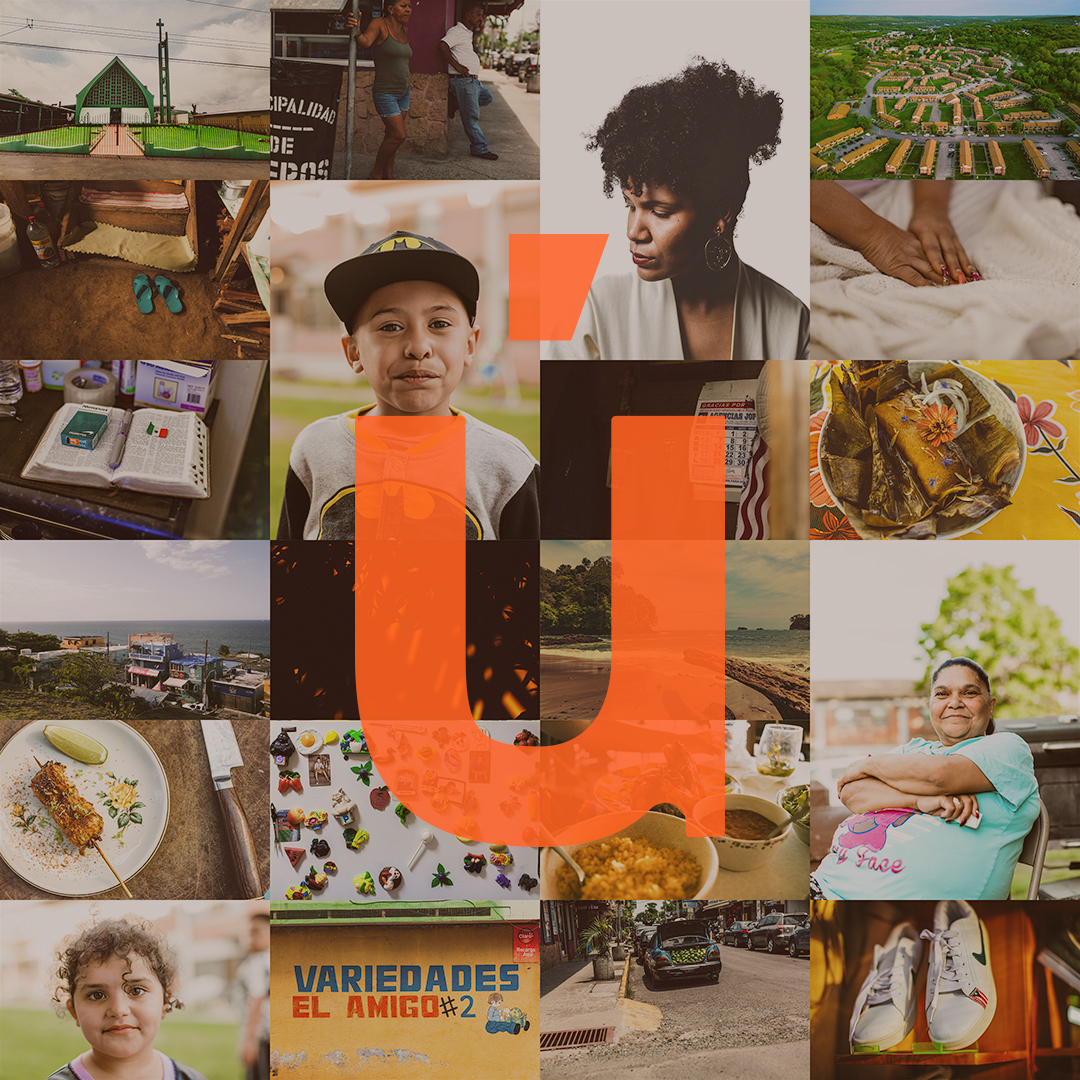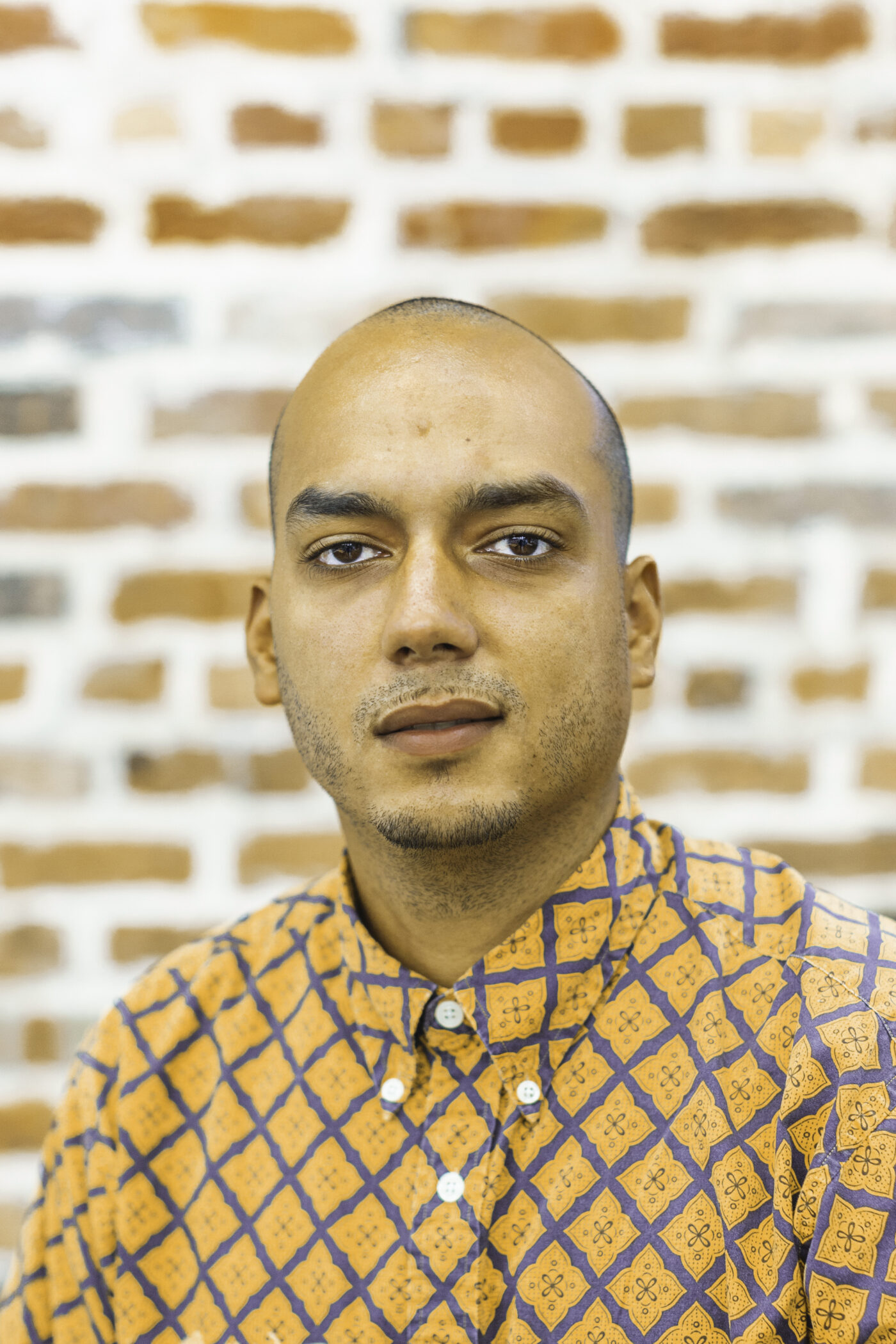Honoring Hispanic Heritage Month with a Logo by Utile’s New Director of Community Engagement and Design Justice, Jose Cotto
We are so excited to be celebrating Hispanic Heritage Month by introducing Jose Cotto, our new Director of Community Engagement and Design Justice! We asked Jose to introduce himself by sharing his unique photographic vision of the communities he’s engaged with.

Statement from the Artist:
Cuando me senté a reflexionar sobre lo que significa para mí la “herencia hispana,” seguía volviendo a la importancia del idioma y cómo el español me ha permitido conectarme con la gente de maneras únicas durante mis viajes. Como afro-boricua de primera generación que creció en Great Brook Valley, un pequeño proyecto de vivienda en Worcester, donde la mayoría de las familias eran puertorriqueñas, el español fue mi primer idioma. Sin embargo, con el tiempo, he perdido gran parte de mi lengua materna al haberme adaptado al entorno dominado por el inglés en el que nos encontramos. Al incorporar un acento en el logo, quise comunicarme con las comunidades hispanas de una manera que resuene con el espíritu y que vaya más allá de simplemente entendernos — se trata de cultivar una conexión más profunda. El idioma siempre importa.
When I sat down to reflect on what “Hispanic heritage” means to me, I kept returning to the significance of language and how Spanish has allowed me to connect with folks in unique ways during my travels. As a first-generation Afro-Boricua who grew up in Great Brook Valley, a small housing project in Worcester predominantly home to Puerto Rican families, Spanish was my first language. However, over time, I’ve lost much of my native tongue as I’ve acquiesced to the English-dominated landscape we currently find ourselves in. By incorporating an accent into the logo, I wanted to communicate with Hispanic communities in a way that resonates with the spirit and goes beyond simply understanding each other — it’s about cultivating deeper connection. Language always matters.
Partiendo de esto, sabía que quería usar imágenes de mi archivo que celebren a las personas, lugares y pilares culturales que se encuentran en toda la diáspora. Incluí una foto de mi titi Zaida, la matriarca de nuestra familia y una figura central para muchos de nosotros. También hay fotos del Valley donde por primera vez me di cuenta del poder del entorno construido y aprendí tanto sobre la comunidad. Fotos de comida como arroz, habichuelas y aguacates — porque, ¿qué podría ser más hispano que eso? Las manos de mi madre sirven como un recordatorio del trabajo que nuestras comunidades han aportado durante milenios, reconociendo que, muchas veces, son las mujeres quienes hacen el trabajo pesado para mantenernos avanzando. Fotos de los miembros más jóvenes de la familia subrayan la importancia de la comunión intergeneracional. Finalmente, imágenes que resaltan la tierra y las prácticas espirituales ofrecen momentos de reflexión — recordándonos que hay más en la existencia que solo este plano, más allá de nuestros cuerpos.
Building on this, I knew I wanted to pull images from my archive that celebrate the people, places, and cultural staples found across the diaspora. I included a photo of my titi Zaida, the matriarch of our family and a core anchor for so many. There are photos of the valley where I first became aware of the power of the built environment and learned so much about community. Photos of food such as rice, beans, and avocados — because what could be more Hispanic than that!? My mother’s hands serve as a reminder of the labor our communities have contributed over millennia and acknowledge that women are often the ones doing the heavy lifting to keep us moving forward. Photos of younger family members emphasize the importance of intergenerational communion. Lastly, images highlighting the land and spiritual practices offer moments of reflection — reminding us that there’s more to existence than just this realm, more than just our bodies.
Por último, el uso del color naranja fue intencional — incorporé un color de la paleta de Utile que también tiene un gran significado en toda la diáspora. Simboliza nuestras relaciones duraderas con la tierra, la vitalidad en nuestra resistencia y resiliencia, y nuestras conexiones espirituales con la vida, la muerte y la celebración.
Finally, the use of orange was intentional — it incorporated a color from the Utile palette and also holds significance across the diaspora. It symbolizes our longstanding relationships with the land, the vibrancy in our resilience and resistance, and our spiritual connections to life, death, and celebration.
– Jose Cotto, October 2024

About Jose:
Jose Cotto (b. 1989, Worcester, MA) is an interdisciplinary artist and designer from Great Brook Valley. His creative practice explores relationships between people, place, and time – often integrating poetry, carpentry, architecture, mark-making, and lens-based media. Cotto’s work has been featured by Paper Monuments, Prospect New Orleans, ASHE, Newcomb Art Museum, Antenna Gallery, and the Contemporary Art Center. He earned a Masters of Architecture from Tulane University (2014) and a BFA in Design + Architecture from the University of Massachusetts, Amherst (2011). Cotto is a Salzburg Global Seminar Cultural Innovators Fellow (2018) and was an Artist In Residence at the Joan Mitchell Center (2022) and A Studio in the Woods (2022, 2024).
Most recently, as part of the team at The Small Center for Collaborative Design, Cotto worked on exhibits and public programming that made connections between academia, local artists, and community partners. Additionally, he supported the center’s various projects, contributed to documentation and communication efforts, and led a seminar focused on public interest design and interdisciplinary practices.